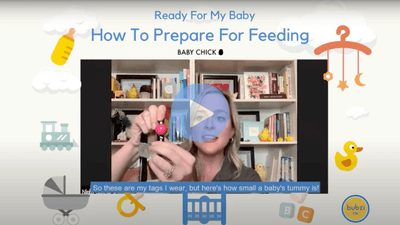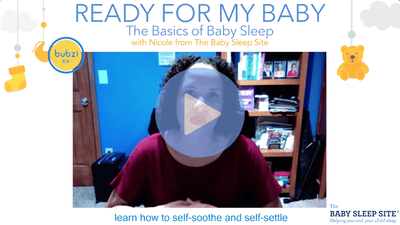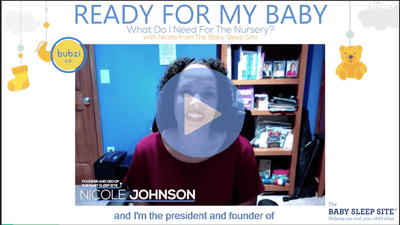Why use a nasal aspirator?
When your infant’s nose is congested with mucus, usually in the early stages of development, the baby cannot take care of the problem on its own and needs a helping hand to deal with any stubborn nasal passage blockages. That’s where a nasal aspirator comes in, as it is often the ideal solution.
Your baby depends on you for pretty much everything especially during the first couple of years of its life including the ability to clear its nasal passages. Newborn babies are vulnerable to sickness and congestion of the nose can cause serious problems if not dealt with since it affects the child’s ability to breathe through the nose properly.
A nasal aspirator is an important tool for getting rid of nasal passage congestion and drawing the fluids out through the baby’s nostrils. It’s a crucial item for any parent to possess because they will most likely need it on a regular basis.
A nasal aspirator is the most efficient way of removing mucus from a stuffy little nose. Most good hospitals will provide new parents with a rubber bulb syringe in their newborn kit, which generally works well but those parents who like to make sure their baby has the best product possible will tend to purchase either an electric aspirator or a human suction nasal aspirator.
Different types of nasal aspirators and how to use them
Keeping a baby’s nasal passageway clean and clear is something parents should do daily especially when a child is suffering from a runny nose.
Each day, particles accumulate in the airways and mucus builds up. A blocked nose can agitate your child, make it uncomfortable, and even prolong sickness. You will notice that your baby may sneeze without visible signs of flu or cold and in most cases; this sneezing is your infant’s way of naturally cleaning the nasal cavity.
The problem is more prominent when your child has a cold because that’s when mucus starts to build up. Even sneezing may not be enough to clear the nasal cavity. To address this, parents can use any of the three main types of nasal aspirators which are common on the market.
Bulb syringes
These are the most common type of nasal aspirators. They are common in USA and many other parts of the world since they are the hospitals’ preferred choice. The bulb syringe works by creating a vacuum that sucks out the mucus. It is operated by pumping out the air from the bulb and then releasing it once the nozzle is in baby’s nose.
There is a tendency among parents to assume that just because doctors and nurses use them in hospitals then they are probably the best method of dealing with a baby’s stuffed nose but there are other tools which can be more effective.
Bulb syringes are relatively cheap because often they are sold as disposables. The downside to using the bulb syringes is that it becomes nearly impossible to confirm whether all the mucus that has been suctioned in is cleaned out of the baby’s nasal passage. In addition, it is almost impossible to air dry the insides of the bulb and usually after the bulb has had a few uses, it’s bound to harbor bacteria, mold, or viruses, which is another health hazard parents ought to be aware of.
Furthermore, another problem with the bulb syringe method is that often the tip of the bulb has to be inserted in the nostril a number of times since the volume of suction in the bulb is small.
This repetition can irritate the inner lining of the nose due to its sensitive nature; particularly the portion covering the nasal septum and this in turn can cause nosebleeds to occur. For this reason the bulb syringe should ideally be used once and disposed of.
Electric nasal aspirators
These nasal aspirators generally cost the more. This however doesn’t mean they are the best aspirators to use for your baby’s nose.
Most parents are attracted to the features commonly associated with electric nasal aspirators such as the ease of use, the idea that they can be cleaned in a dishwasher which many consider convenient, the plastic collection cups which are generally transparent to make is easy to gauge how much has been sucked out of the baby’s nose, etc.
The battery operation is also considered helpful because it allows the parent to maintain or release suction as needed. Other parents feel that this type of nasal aspirator will also protect them from catching the baby’s cold compared to human suction devices.
The disadvantage with using an electric nasal aspirator for cleaning a new born baby’s nose is that the microscopic droplets from the infant’s nose may eventually travel to the pump mechanism and cause contamination. The buildup of germs in the pump mechanism can be a health hazard.
Additionally, it is cumbersome cleaning the pump device except for the suction reservoir. Many reviewers have also mentioned the fact that the suction power of most electric nasal aspirators tends to be weak.
Human suction nasal aspirator
This is the most preferred baby nasal aspirator because it gives parents the ability to manually control the level of suction and it is also easy to clean. It’s a more hands on approach to dealing with an infant’s blocked nose.
These types of nasal aspirators typically come with a tube at one end and a mouthpiece on the other. A vacuum is created when the mouthpiece is sucked and the aspirator with a mouthpiece uses suction force from the parent to pull out the mucus.
There’s also a container which will then catch all the snot and a filter that will prevent bacteria from reaching the parent’s mouth.
Retailers such as Bubzi Co™ who are leaders in the baby products niche sell premium nasal aspirators which are fantastic because they use soft silicone, have non-irritating tips, are washable and reusable, and do not require any filters.
The hospital grade snot suckers are perfect for eliminating nose congestion. The Bubzi Co Premium Nasal Aspirator is known worldwide and gets great reviews.
Three tips to remember when using a nasal aspirator
- It’s better to start with using a nasal saline spray or solution in order to moisten the inner linings of the nostril because this makes the mucus thinner and easier to suck out.
- Finding the best way to position your baby can be difficult when you initially begin so take time to be careful and gentle so that the nasal aspirator is not pushed in too deep in the baby’s nostrils.
- Be careful not to irritate the baby’s nasal passage by repeated action or excessive use of the nasal aspirator.








